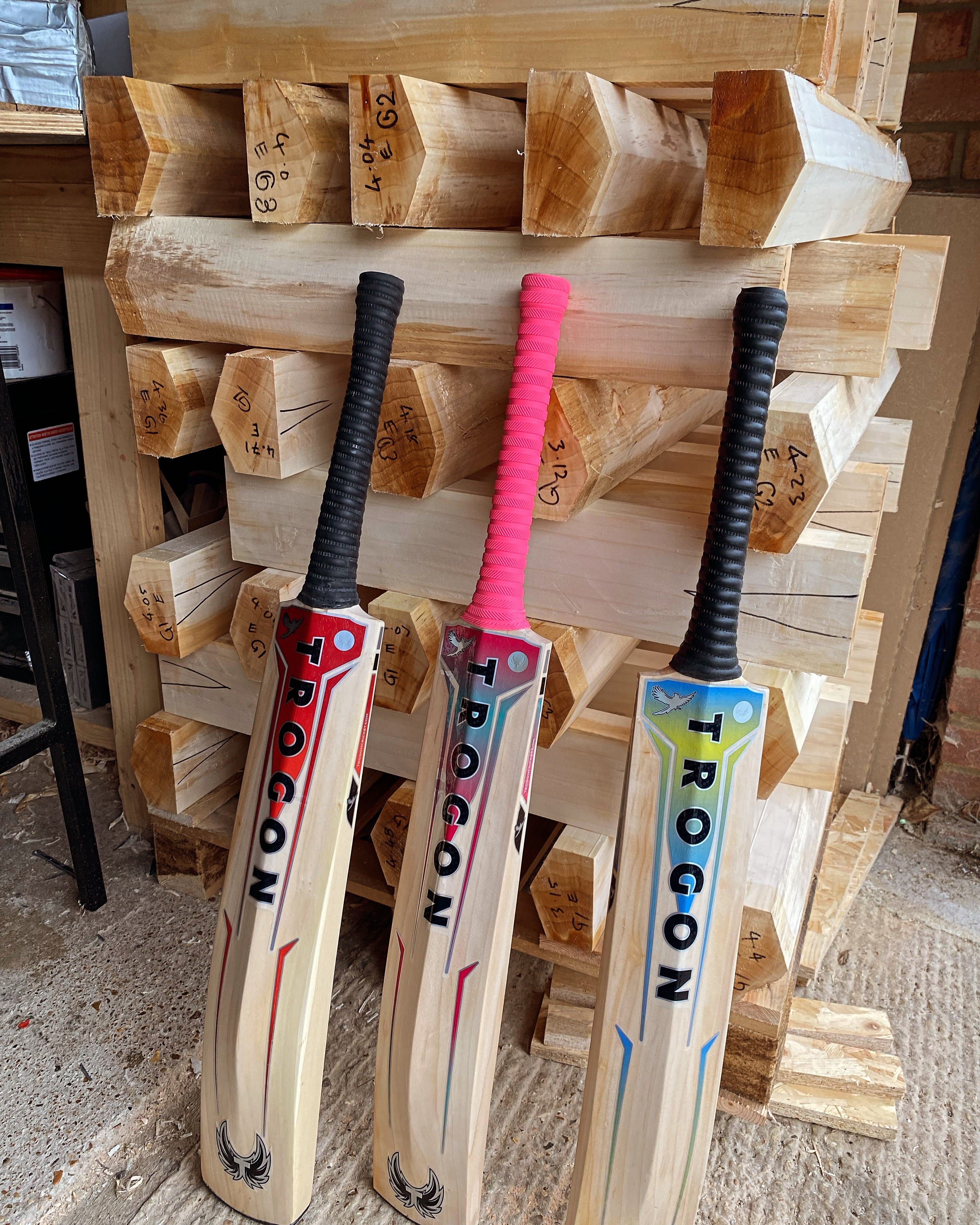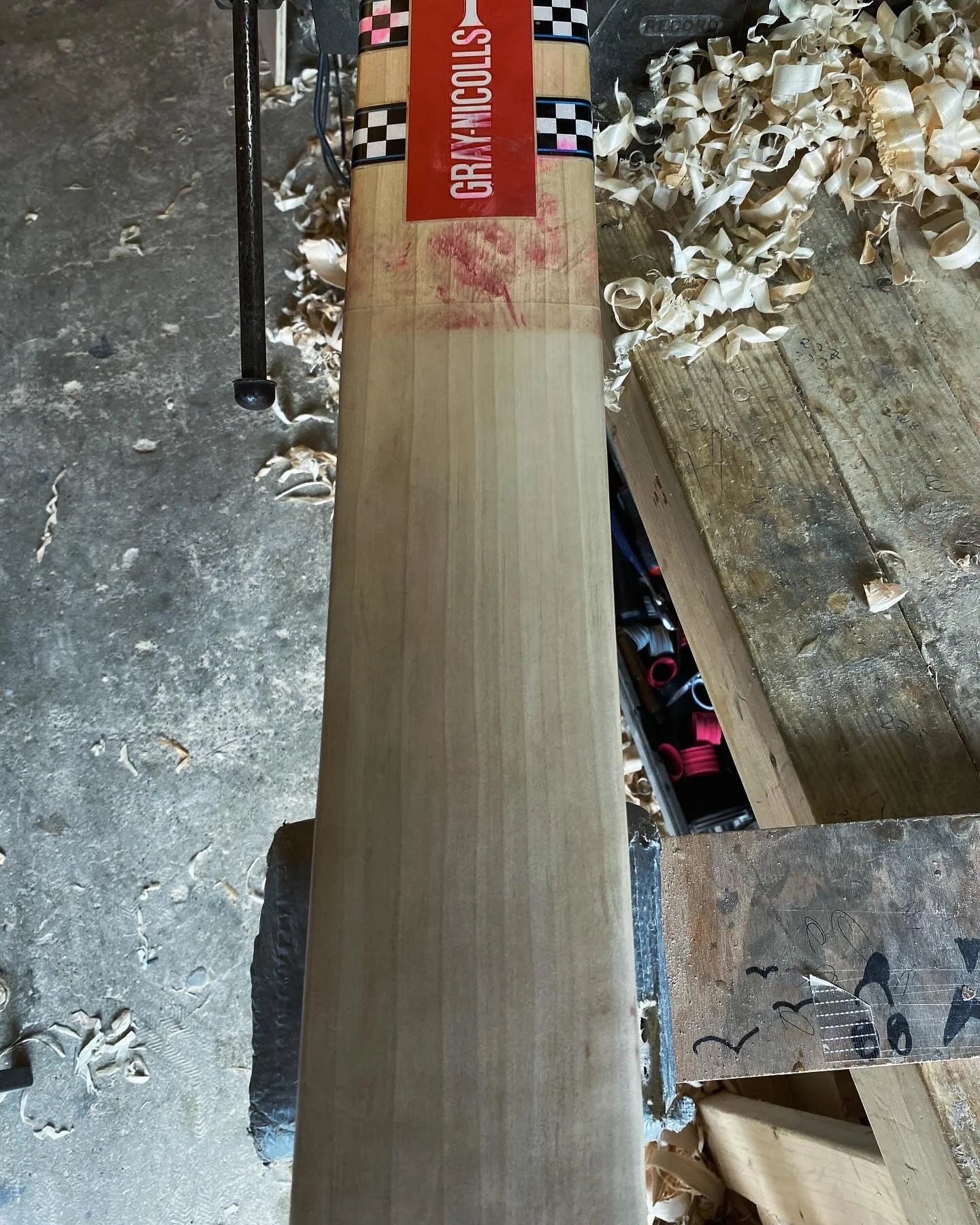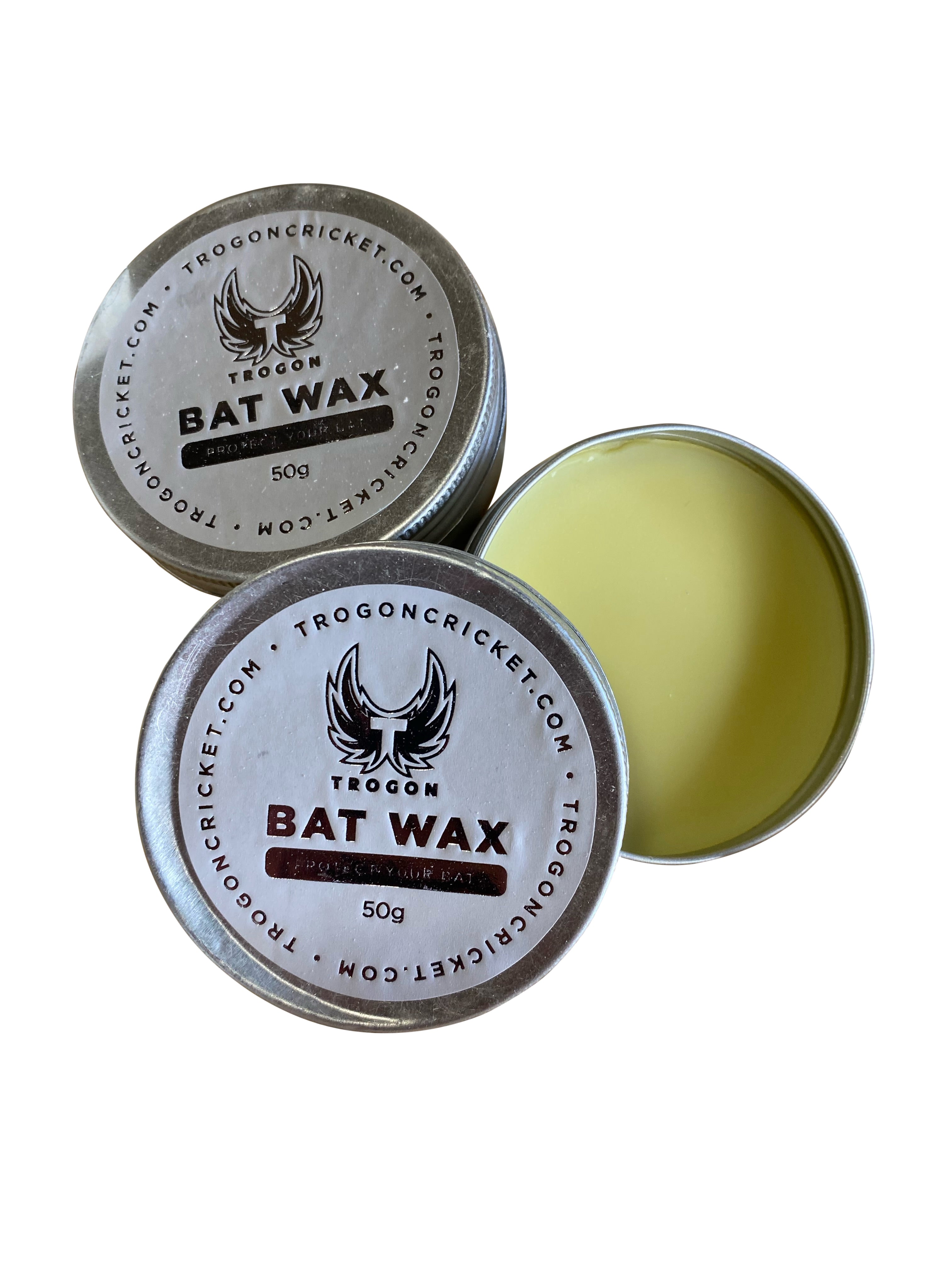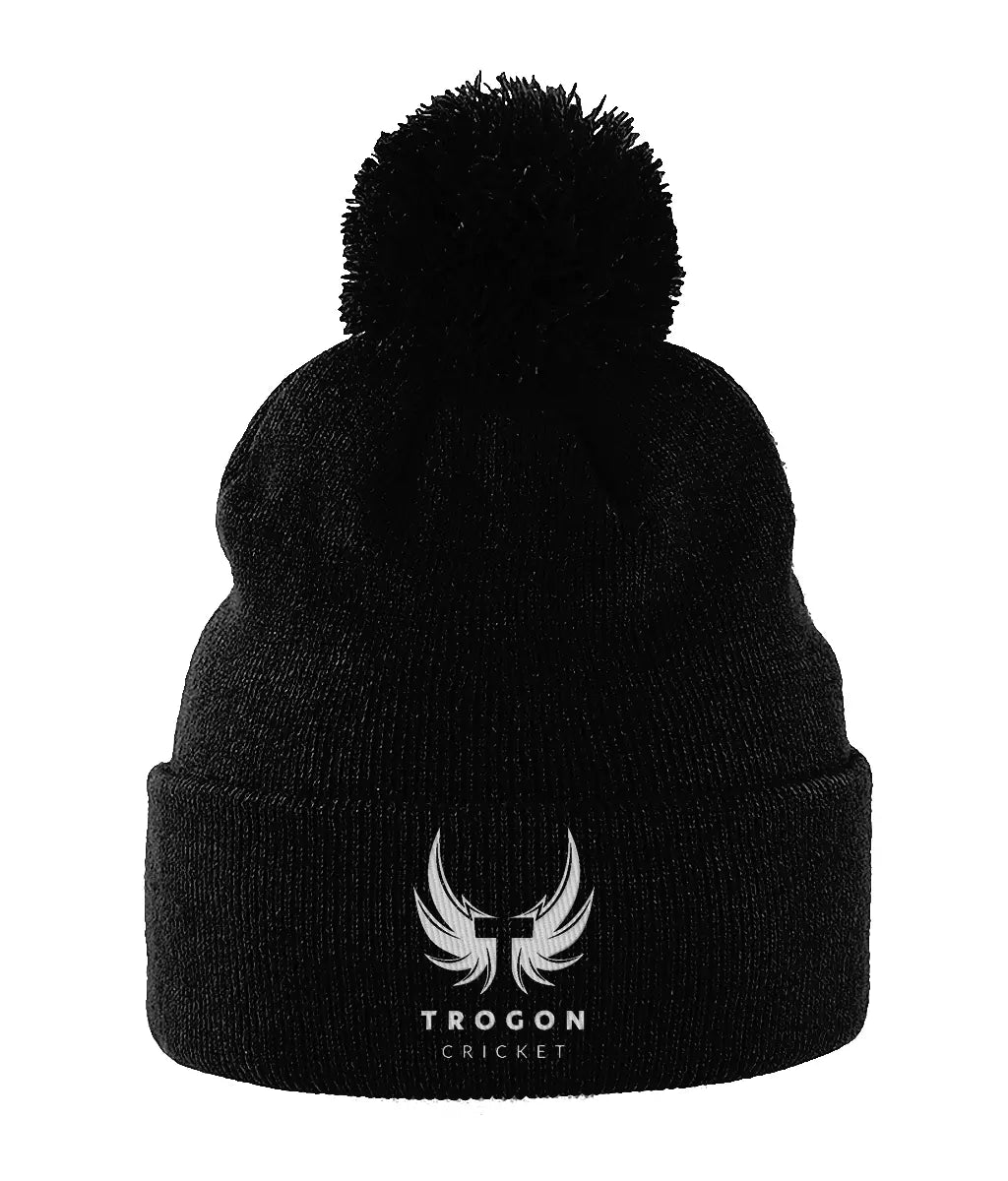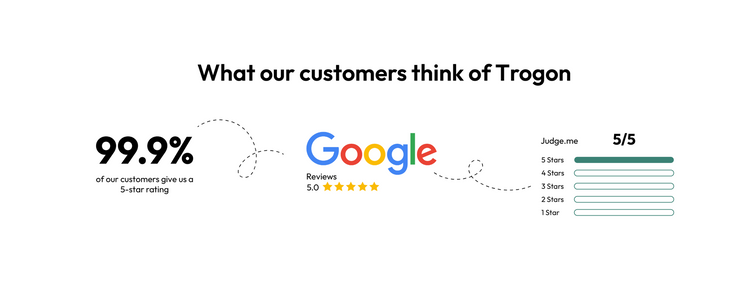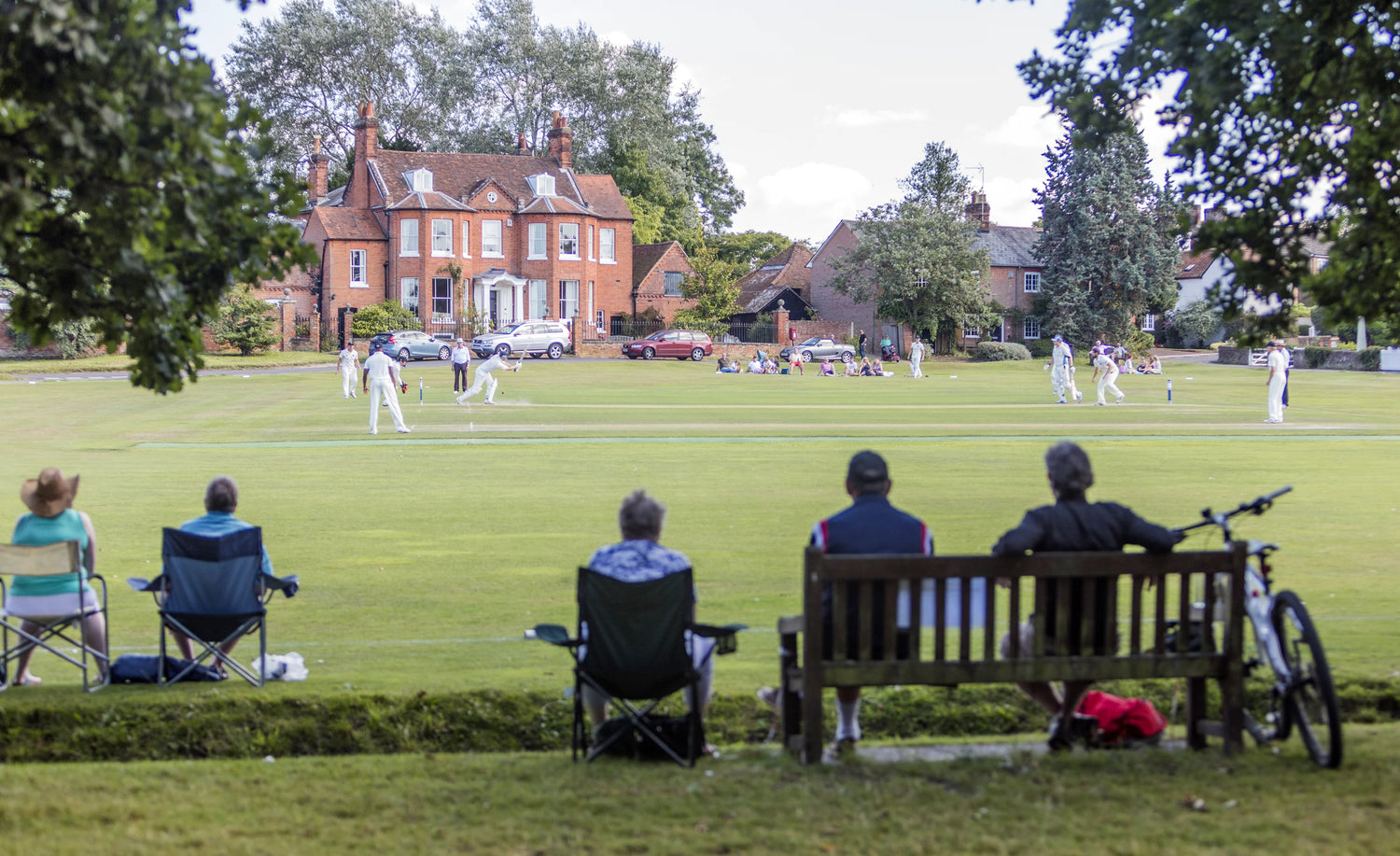English Willow cricket bats are renowned globally for their superior quality and performance, but why is that?
In this blog post, we’ll delve deep into the world of English Willow cricket bats, covering everything from cricket bat grading to the specific characteristics that define the quality and performance of these bats.
But before we delve into the blog post, why is English Willow the premium cricket bat willow?
English Willow is a high-quality wood from the Salix alba caerulea tree. It is prized for cricket bats due to its lightweight, strong, and shock-resistant nature. Grown in England’s wet, cold climate, it develops an ideal fibrous structure, perfect for absorbing cricket ball impacts and generating a wonderful ping.
So, let’s get started.
Cricket Bat Grading of English Willow Cricket Bats
Cricket bats are graded based on the quality of willow used to make a specific bat. The grading system ranges from Grade 1 to Grade 4 and includes Butterfly grade.
English willow clefts are often regraded based on grain look/number and performance characteristics, contributing to creating high-quality cricket bats.
Each grade has its unique characteristics.
Grade 1
English willow grade 1 bats are the highest quality bats available. They are made from the best willow with a straight grain structure, have a clean appearance with minimal blemishes, and offer excellent performance and ping, significantly enhancing the bat's performance.
Grade 2
English willow grade 2 bats are a step down from Grade 1. They may have a few more blemishes and irregular grain patterns, but they still perform well and are popular among cricketers of all levels.
Grade 3
English willow grade 3 bats are more economical, featuring more visible blemishes and irregularities in the grain. Despite these aesthetic differences, they still deliver good performance and are ideal for amateur and young cricketers who are just starting.
Grade 4
Grade 4 bats are usually the most economical. They have more blemishes and a less consistent grain structure but can still be suitable for beginner or casual players.
Butterfly Grade
Butterfly-grade bats are unique. They feature a distinct "butterfly" stain on the face, resulting from two different wood growth rates. These bats are often more durable and can offer great performance.
Grains Explained in English Willow Cricket Bats
Number of Grains and Width
The number of grains on a cricket bat and the width between each grain are crucial factors in determining the bat’s quality and performance.
A higher number of grains typically indicates a higher quality bat. However, the width of the grains is also important. Partly shaped bats can be customized to meet specific needs, highlighting the flexibility and options available for beginners and regular bat makers.
-
A narrow-grain bat will play well but may not have a long life. The tight grain structure of English Willow enhances performance and offers a more prominent sweet spot for better playability from the off, as these bats don't require as much knocking in.
-
A wider-grain bat (with as few as 4 grains) will take time to play well and require much more knocking in but will have a longer lifespan. The wider grains indicate younger wood, which is stronger and more resilient.
Now, let's move on to the difference in colour of English willow clefts.
Colour of the Cleft in English Willow Cricket Bats
Significance of Cleft Colour
Players and enthusiasts often scrutinize the colour of the cleft in English Willow cricket bats. While this aspect primarily affects the bat's aesthetic appeal, it also offers insights into the willow's characteristics.
Factors Influencing Cleft Colour
-
Soil and Growing Conditions: The colour of the willow tree can vary depending on the soil type and growing conditions where it was cultivated. Darker soils produce willow with darker clefts, while lighter soils may produce lighter wood. These colour variations are natural and do not necessarily indicate inferior quality.
-
Age and Maturity of the Wood: The age and maturity of the wood can also impact the colour of the cleft. Generally, older and more mature willow tends to have a slightly darker hue than younger willow, which is often lighter.
Misconceptions About Cleft Colour
-
Quality Misconception: There's a common misconception that lighter-coloured clefts indicate higher quality. In reality, the colour of the cleft has minimal impact on the performance attributes of the bat. Whether light or dark, the playing characteristics are more influenced by the grain structure, density, and moisture content of the wood and the craftsmanship of the batter maker.
-
Performance Misconception: Similarly, the colour of the cleft does not determine the bat's performance. A darker cleft does not necessarily mean the bat will perform poorly, nor does a lighter cleft guarantee superior performance.
Heartwood in English Willow
Definition of Heartwood: Heartwood is the older, central part of a mature tree. As the tree ages, the inner cells lose their vitality and harden, forming the heartwood. This part of the wood tends to be denser and can be darker in colour than the outer, younger wood (sapwood).
Something to consider when buying a new bat:
If you are an edgy batter, meaning you play lots of shots that run off the blade or you tend to nick the ball through the slips, and you are righthanded, then getting a bat with hardwood on the outside edge is a good idea, as it's harder wood.
And vice versa, if you are a right-handed batter and edge through to fine leg or short fine leg, then getting heartwood on the inside edge is a good idea.
Most batters will have an idea about this, but I need the heartwood on the outside edge!
Back to the colours!
Colour Characteristics of Heartwood:
Darker Hue: Heartwood is often darker, ranging from a deep, rich brown to a slightly darker shade than the surrounding sapwood.
Impact on Bat Appearance: Bats with heartwood can have a distinctive look, with one side of the bat blade showing a darker colour. This adds to the aesthetic diversity of English Willow cricket bats and plays into what I mentioned above.
Performance Aspects of Heartwood.
Durability: While heartwood can be denser and potentially more durable, it doesn’t significantly alter the bat's performance characteristics.
Personal Preference: Whether a bat has more heartwood or is predominantly made of sapwood often depends on personal preference. Some players believe heartwood adds strength to the bat (it does), while others prefer the traditional look of lighter willow.
Weight of the Cleft
The weight of the cleft is a personal preference that varies from player to player. Lighter bats offer better manoeuvrability, while heavier bats provide more power.
The bat maker's craftsmanship determines whether the bat feels lighter in the pickup while still being a heavy piece of wood.
Having a bat that picks up around 2lb 8oz but weighs 2lb 10-11oz on the scales is the perfect combination of cleft weight and craftsmanship.
Water Content and Density in English Willow Cricket Bats
Understanding the Importance
The performance of English Willow cricket bats is significantly influenced by two critical factors: water content and the density of the timber.
Before making a bat, each cleft is carefully inspected for these aspects, as they are essential in determining how the bat feels and behaves when striking the ball.
Water Content
-
Optimal Moisture Level: English Willow should have an optimal moisture level to maintain its natural flexibility and strength. This level is typically around 12-15%. If the water content is too high, the bat can feel heavier and may not provide the desired level of performance. Conversely, the wood becomes too dry if it's too low, leading to brittleness and a higher risk of damage.
-
Seasoning Process: The seasoning process of English Willow is crucial. It involves slowly reducing the moisture content of the wood to reach the optimal level. Properly seasoned wood enhances the bat's performance by providing the right balance between hardness and flexibility.
Density of the Timber
-
Balance and Feel: The density of the timber affects the bat's balance and overall feel. Denser wood usually results in a heavier bat, which power hitters might prefer for the additional heft it adds to their shots. On the other hand, less dense wood tends to be lighter, offering more control and is preferred by players with a more finesse-based game.
-
Impact on Performance: The density also influences how the bat interacts with the ball. A denser bat can provide more power and a solid feel on impact, but it may also require more strength to handle effectively. A lighter bat, while easier to manoeuvre, might not provide the same power level.
Ok, so we have covered the colour of the clefts, the moisture level and the different grades. Now we move on to pressing the cleft, which is the most important part of making any cricket bat.
Pressing a Raw Willow Cleft: Process and Importance
Overview of Pressing
Pressing is a vital process in bat making, significantly influencing the bat's performance and longevity. This procedure involves compressing the raw willow cleft to enhance strength and resilience.
The Pressing Process
-
Initial Inspection: Before pressing, each willow cleft is thoroughly inspected for quality and suitability. This ensures that only the best clefts are used to make English Willow cricket bats.
-
Mechanical Pressing: The cleft is placed in a mechanical press. This machine applies a controlled amount of pressure across the face and edges of the bat. The pressure levels and duration of pressing are carefully calibrated to achieve the desired balance between hardness and flexibility.
-
Gradual Compression: Pressing is not done in one go but is a gradual process. Multiple rounds of compression are applied, with each round incrementally hardening the wood. This gradual approach prevents over-hardening, which can make the wood brittle.
Importance of Pressing
-
Enhancing Performance: Proper pressing increases the wood's resilience, improving the bat's ability to withstand the impact of the ball. This results in better stroke play and enhanced power behind each shot.
-
Preventing Damage: A well-pressed bat is less likely to crack or splinter under the impact of high-speed balls. This extends the bat's lifespan, making it a more durable choice for players.
-
Customising for Play Style: The degree of pressing can be adjusted to suit different playing styles. Bats with a softer press may offer more flexibility and a better 'feel', while harder-pressed bats provide more power.
I have written extensively about our bat pressing, which you can read Trogon bat pressing.
Trogon Cricket's Approach
At Trogon Cricket, English Willow cricket bats are pressed meticulously, ensuring each bat offers the perfect blend of performance and durability.
Our expert bat maker (me) understands the nuances of pressing and customises this process to match cricketers' specific needs and preferences, ensuring that each bat not only meets but exceeds expectations.
Conclusion
At Trogon Cricket, we understand the nuances that make a cricket bat special.
We handcraft English Willow cricket bats to suit all shapes, sizes, and weights, offering full customisation to meet each batter’s requirements. Trogon Cricket is committed to providing competitive pricing and will surpass any genuine written quote for the purchase of mature English willow trees.
Our vast selection includes English willow grade 1, grade 2, and grade 3 clefts and butterfly, ensuring a perfect match for every cricketer’s needs and budget.
Whether you’re a seasoned professional or an aspiring amateur, our English Willow cricket bats are designed to enhance your game, providing the quality, performance, and customization you deserve.
Buying With Confidence from Trogon
If you’ve made it this far, I’m truly grateful for your time and interest. At Trogon, we’re passionate about providing cricket enthusiasts with exceptional handmade English willow bats, high-quality cricket gear, and stylish cricket-inspired clothing.
Whether you’re exploring our unique range of products, looking for expert bat servicing, or simply sharing our love for the game, your support fuels our journey to make cricket even more special.
Thank you for being part of the Trogon family—together, we’re shaping a legacy for cricket lovers everywhere!

Trogon Product Guarantee
At Trogon Cricket, we stand behind every bat we make. That’s why all our cricket bats come with a 6-month guarantee. If your bat breaks during this period, we’ll replace it with a like-for-like model—no hassle, no stress.
We know how important it is to invest in the right bat, and our guarantee is our way of ensuring your peace of mind. All we ask is that the bat has been properly knocked in, so it’s ready for the rigours of the game.
This commitment goes above and beyond your statutory rights, offering you unmatched confidence in your purchase.
Ready to experience the Trogon difference?[p?
Let us help you find your perfect bat today—whether you're browsing our collection or have questions, we’re here to assist! Contact Us Today
Here at Trogon we have a wide collection of English Willow cricket bats. Click on the links below to see our beautiful bats.








